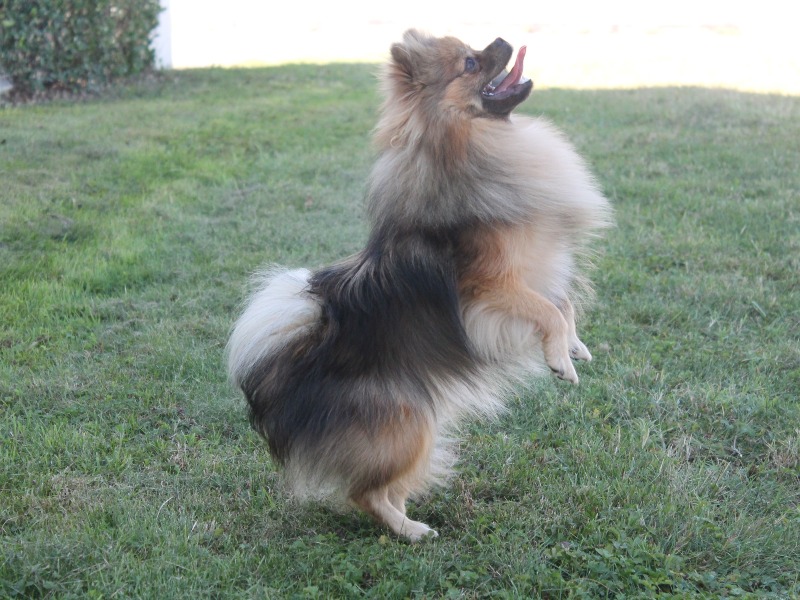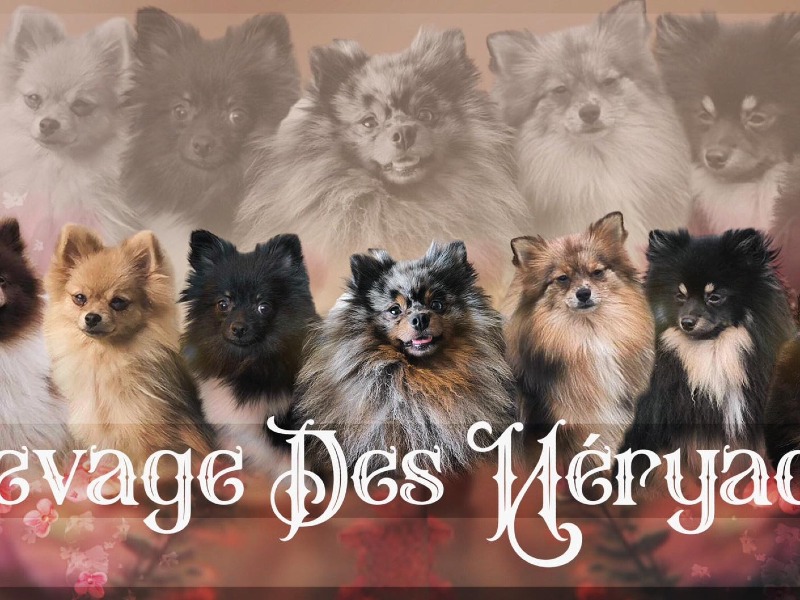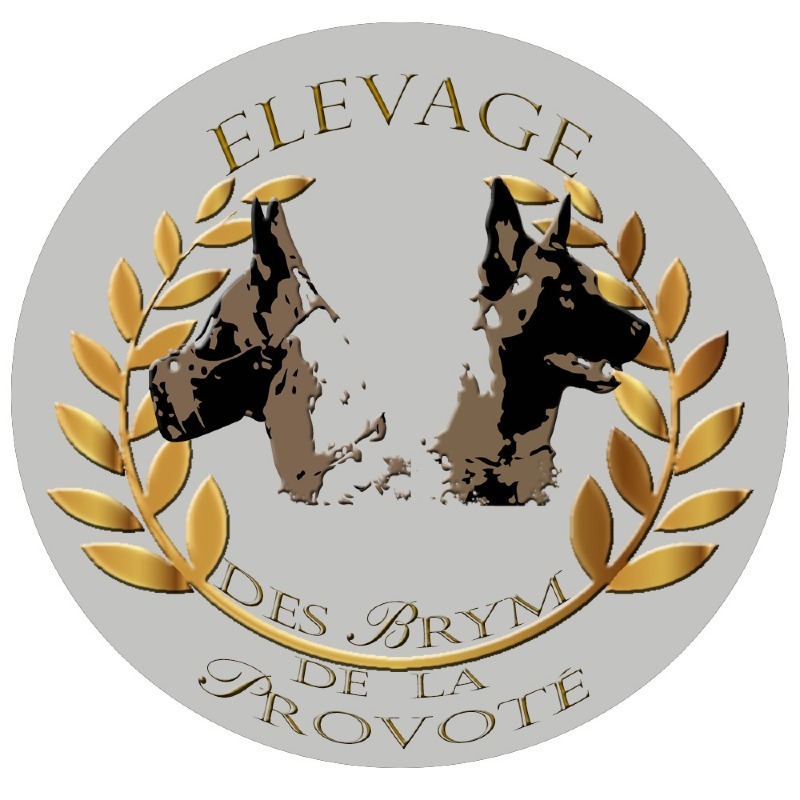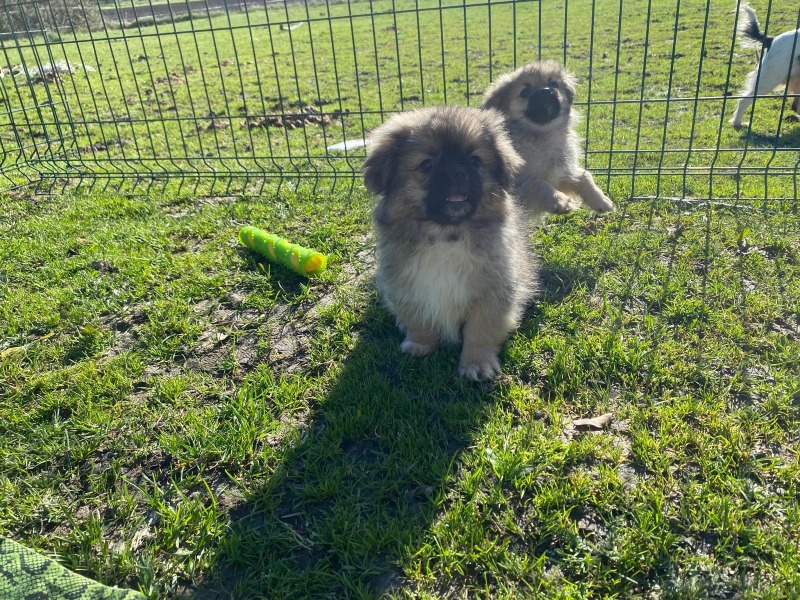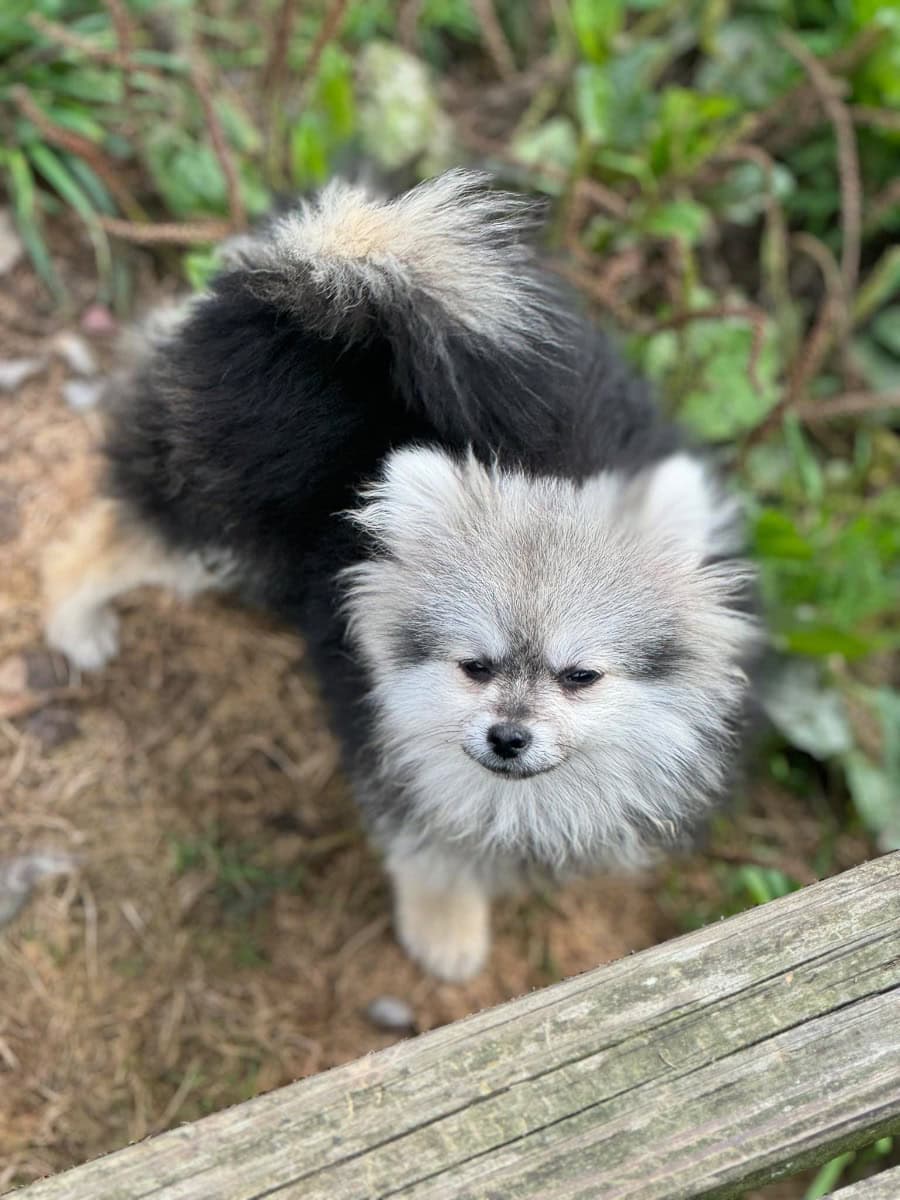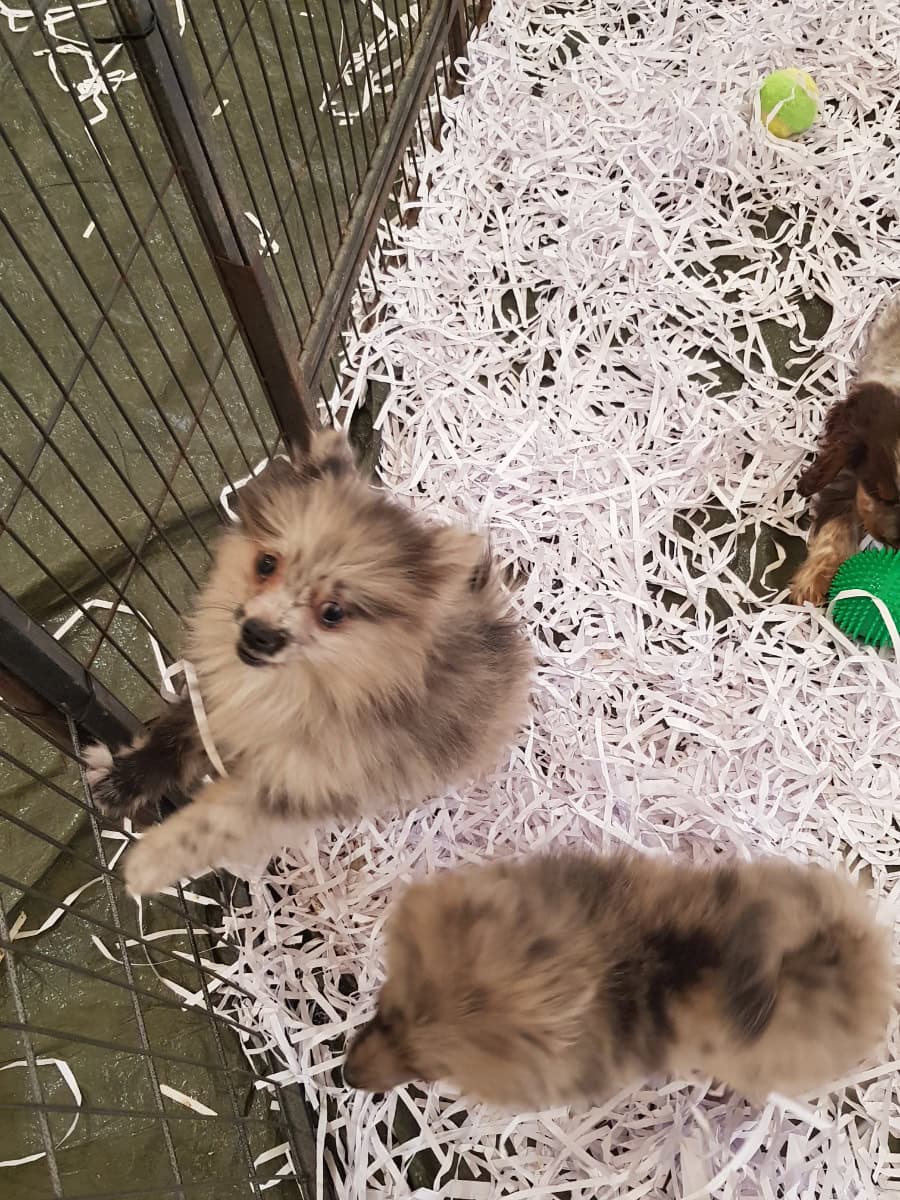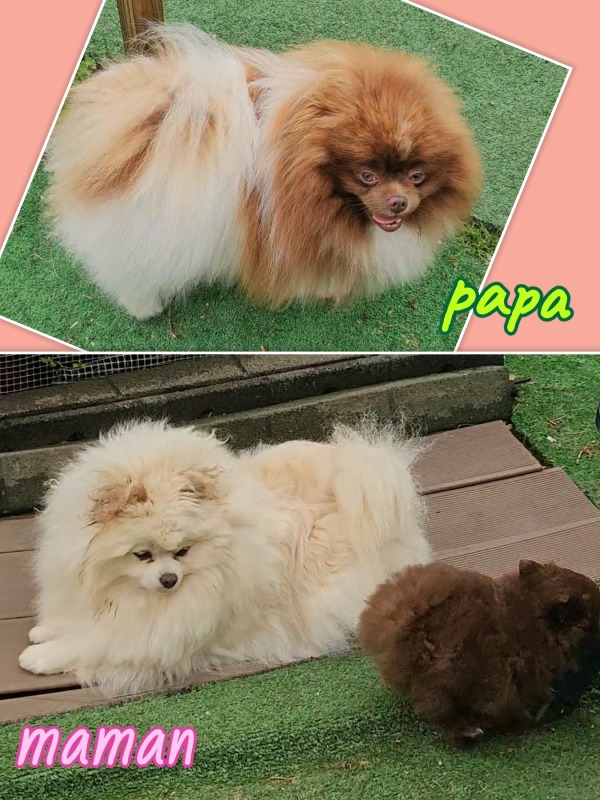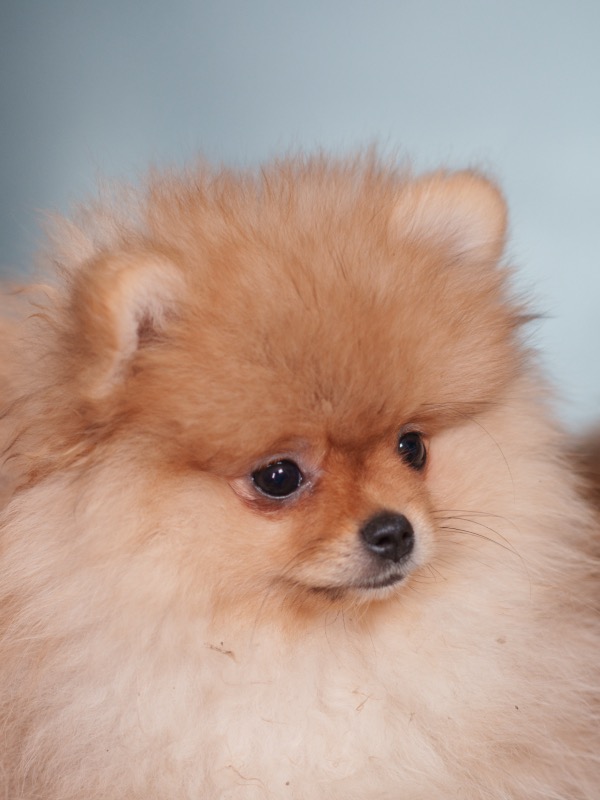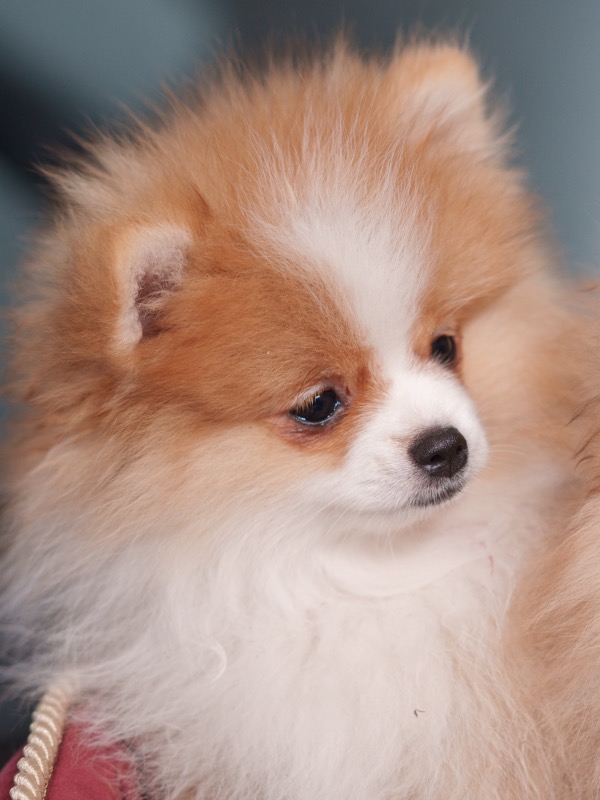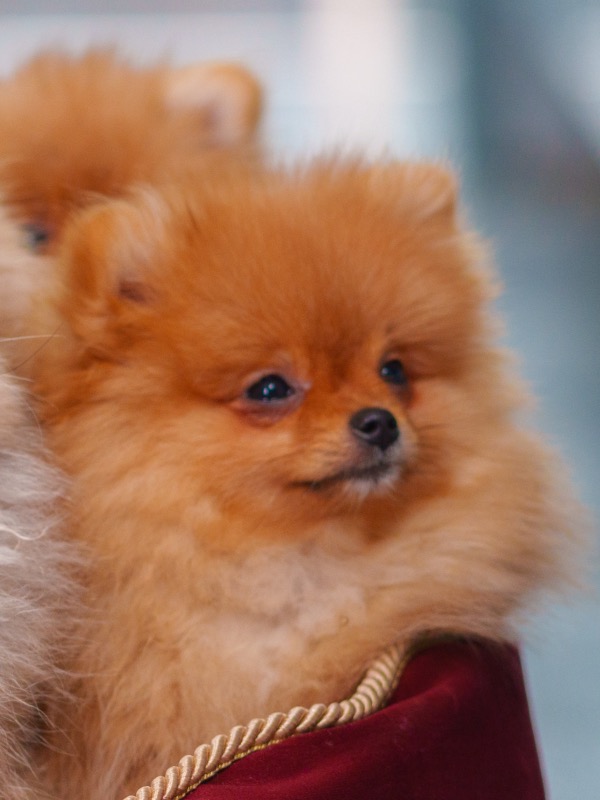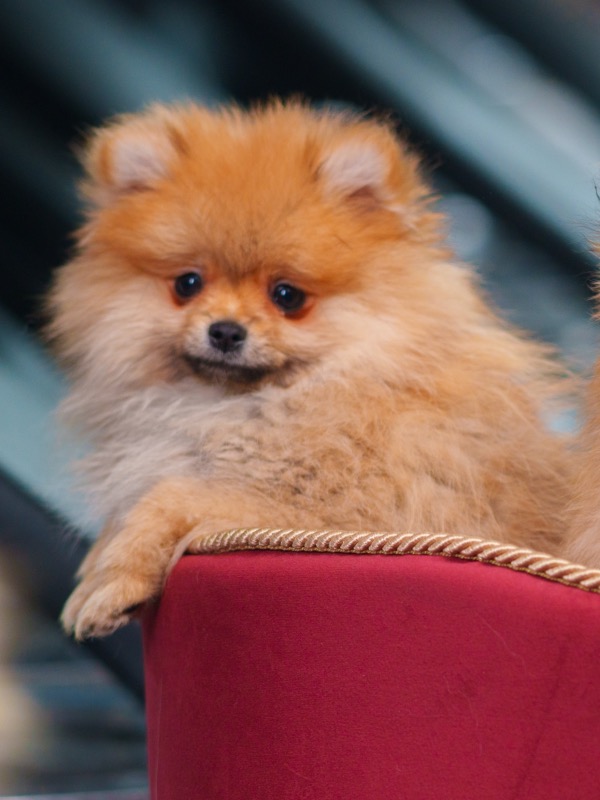Pomeranian spitz
Autres noms : Deutscher spitz, Dwarf spitz, Pom dog, Pom-pom, Pom, Zwers, Lou pom, Pomeranian
Discover the Pomeranian, a lively and energetic small Spitz with a fluffy coat and a charming personality. This loyal and intelligent little dog is the perfect companion for those seeking warmth and affection.
Awareness of acquiring an animal
Adopting or breeding a dog is a responsibility that must be carefully considered. Dogs are loyal companions that require time, attention, and constant care. Whether for leisure, passion, or professional breeding, it is crucial to understand the specific needs of each breed. Provide them with a loving and stimulating environment, and avoid any impulsive acquisition that could harm their well-being. Be a vigilant and committed owner for a happy and healthy companion.
To learn more about animal welfare, we invite you to consult our FAQ by clicking the button below:
Origins and history
The Pomeranian dwarf spitz finds its origins in the polar regions of Europe, particularly in Germany and Poland. Its ancestors were sled dogs, adapted to the harsh climatic conditions of the northern regions. Breeders began to select these dogs for their size, temperament, and appearance, aiming to create a smaller companion better suited to domestic life.
During the 18th century, larger spitz attracted the attention of European aristocrats. The popularity of these dogs increased, especially in Great Britain, where they were showcased at dog shows. Their size gradually decreased due to selective breeding practices, giving rise to the miniature version we know today.
In the following century, the Pomeranian dwarf spitz experienced worldwide popularity, becoming one of the most sought-after companion dogs. Its affectionate and playful nature, combined with its dense coat and varied colors, has made it an ideal companion for many families. Today, its popularity continues to grow, and it ranks among the most beloved breeds in the world.
Physical characteristics
The Pomeranian dwarf spitz is a small dog, generally recognized for its charming and appealing appearance. Adults typically weigh between 1.5 and 3.5 kg, with a height at the shoulder ranging from 18 to 30 cm. Their silhouette is usually well-proportioned, displaying a compact and muscular body, which gives them a dynamic look.
This breed is distinguished by its thick double coat, consisting of a dense undercoat and long, straight guard hairs. Coat colors can vary, including black, orange, cream, chocolate, and even various marking patterns. Their ears, triangular and erect, add to their expressiveness and contribute to their undeniable charm.
The almond-shaped eyes are dark and bright, enhancing the lively and intelligent expression expected from this breed. The well-furred tail is carried curled over the back, adding a touch of pride to their posture. In summary, the Pomeranian dwarf spitz is a small companion with an attractive physique, combining elegance and liveliness.
Character
The Pomeranian dwarf spitz is a small dog full of personality and is distinguished by several notable character traits. First of all, it is known for its lively and energetic nature. This ground breed is full of life and requires regular physical and mental stimulation. Owners must ensure they provide daily activities to satisfy its exercise needs.
Next, the Pomeranian dwarf spitz is very affectionate and sociable. It quickly forms strong bonds with its owners and family. This dog loves companionship and often shows protectiveness towards its loved ones. Its friendly temperament makes it an excellent companion that enjoys human interactions.
However, it is important to note that the Pomeranian dwarf spitz can have an independent personality and can sometimes be a bit stubborn. This can make training a challenge, requiring patience and consistency from the owners. Additionally, its guarding instinct can make it wary of strangers, although it is generally friendly once it feels secure. In summary, the Pomeranian dwarf spitz is a joyful, intelligent, and affectionate companion that enriches the lives of those who welcome it.
Life expectancy
The life expectancy of a Pomeranian dwarf spitz generally ranges from 12 to 16 years, making it a relatively robust breed. Several factors influence this lifespan, including genetics, diet, and veterinary care. Good medical follow-up allows for early detection and treatment of health issues, which can significantly improve the longevity of these dogs.
In terms of care, a balanced diet is crucial. A nutrient-rich diet helps maintain a healthy weight and supports the dogs' immune system. Regular walks and stimulating play are also essential for their physical and mental well-being.
Furthermore, Pomeranian dwarf spitzes are sensitive to certain medical conditions, such as dental or heart problems, highlighting the importance of annual visits to the veterinarian. By providing a safe and loving environment, you can maximize the chances of a long and healthy life for your furry companion.
Exercise and activity needs
Pomeranian Miniature Spitz dogs have specific needs in terms of exercise and activity to maintain their physical and mental health. Despite their small size, these dogs are generally very energetic and require regular stimulation to avoid boredom, which can lead to undesirable behaviors.
A daily walk of at least 30 minutes is essential to meet their exercise needs. This can be divided into two 15-minute walks. During these outings, it is wise to vary the routes to maintain their curiosity and interest. Outdoor play, such as fetch or chasing a toy, is also beneficial for channeling their energy.
In addition to physical exercise, mental stimulation is crucial. Intelligence games, agility courses, or obedience training sessions can help the Miniature Spitz expend their mental energy. By incorporating these activities into their routine, we ensure that they remain happy, balanced, and healthy.
Recommended diet
The diet of the Pomeranian toy spitz is essential for its health and well-being. Due to their small size, these dogs have specific nutritional needs that must be met with high-quality food. It is advisable to choose kibble formulated specifically for small dog breeds. This kibble contains appropriate nutrients that promote dental health, digestion, and the energy required for their activity level.
Proteins should make up a significant part of their diet, as they are essential for muscle development and maintaining vitality. It's best to opt for high-quality protein sources such as chicken, beef, or fish. Additionally, fats play a crucial role in skin and coat health, so it is recommended to include omega-3 and omega-6 fatty acids in their diet.
Portion sizes should be adapted to their size, taking into account their age and activity level. Overfeeding can lead to obesity, which affects their long-term health. It's wise to divide their daily ration into several small meals to promote optimal digestion. Finally, always remember to provide fresh, clean water to keep your dog well-hydrated.
Training and obedience
The education and training of a Pomeranian dwarf spitz are essential elements to ensure a balanced and harmonious behavior. Due to their keen intelligence, these dogs are easy to train, but they can sometimes show a certain stubbornness. Therefore, it is crucial to adopt a positive approach, using reward-based reinforcement techniques to encourage them.
From a young age, early socialization is recommended. Exposing the puppy to various environments, people, and other animals helps to build their confidence and reduce fearful behaviors. Socialization classes or meetings with other dogs can be beneficial for their development.
Consistency in commands and routines is paramount. This helps the Pomeranian dwarf spitz understand their owner's expectations. Training sessions should be short, dynamic, and playful to maintain their attention. Boredom can set in quickly, so it is advisable to vary the exercises.
Finally, strengthening the bond between the dog and its owner through play and daily interactions fosters a healthy relationship, which is essential for mutual flourishing.
Behavior with children
The Pomeranian dwarf spitz is known for its affectionate personality and playful behavior, making it an excellent companion for children. Their small size and lively nature allow them to easily fit into a family environment. They are generally very sociable and love to interact with family members, making them particularly appealing to young children.
However, it is crucial to supervise interactions between this type of dog and children. Although they are usually friendly, their boundless energy can sometimes be too intense for younger children, who may not understand how to play gently. The Pomeranian dwarf spitz, while affectionate, may react defensively if it feels cornered or handled inappropriately. Therefore, it is essential to teach children how to treat the animal with respect and care.
Training plays a key role in integrating this dog into a family with children. Early socialization and positive training can help develop a balanced behavior, allowing the dog to feel confident and comfortable around children. With the right setting and supervised interactions, the Pomeranian dwarf spitz can become a beloved and protective family member, bringing joy and fun to the children while strengthening emotional bonds.
Compatibility with Other Animals
The Pomeranian toy spitz, with its small size and vibrant personality, is often seen as an excellent companion. This breed is generally sociable and can adapt to the presence of other household pets, provided that there is early and appropriate socialization. From a young age, these dogs should be exposed to various species, such as cats and dogs, to learn how to interact harmoniously.
Due to their energetic and playful nature, Pomeranian toy spitzes may sometimes be perceived as intrusive by calmer animals. They enjoy playing and running, which can intrigue or annoy certain pets. Therefore, it is essential to monitor interactions and guide playtime, especially with senior or more delicate animals.
The personality of the Pomeranian toy spitz also plays a crucial role. Some individuals may be territorial or dominant, which can lead to tension. As a result, gradual introductions and guiding interactions can facilitate the adoption of a harmonious lifestyle with other animals. Thus, with proper attention and patience, this dog can coexist very well with other four-legged companions.
Grooming needs
The Pomeranian dwarf spitz requires regular grooming to keep its coat healthy. Its double coat, consisting of a soft underlayer and longer outer fur, necessitates frequent brushing. Ideally, it is recommended to brush the dog at least two to three times a week to avoid tangles and matting. During shedding periods, which generally occur in spring and autumn, daily brushing is advised to help remove dead hair.
Grooming for this breed also includes occasional bathing, usually every one to three months, depending on its activity level and environment. Using a specific dog shampoo will help maintain the quality of its coat and prevent skin irritations. It is essential to thoroughly dry the coat after bathing to avoid any moisture that could lead to infections.
Finally, nail trimming is another crucial step in maintenance. The nails should be checked monthly, and if necessary, trimmed to prevent discomfort while walking. Dental care should not be overlooked: regular tooth brushing is essential to prevent dental issues. Thus, regular and appropriate grooming will ensure that this animal has a shiny coat and good overall health.
Health
The Pomeranian toy spitz is a small dog, valued for its charming appearance and lively personality. However, this breed has certain health predispositions that are essential to be aware of.
First of all, dental problems are common. Due to their small mouth size, these dogs can develop periodontal diseases. Therefore, it is recommended to implement a regular dental care program, including brushing and veterinary check-ups.
Next, eye disorders, such as cataracts and progressive retinal atrophy, can also occur. Owners should be attentive to signs of visual problems, such as changes in behavior or difficulty navigating as usual.
Finally, the risk of obesity should be considered, particularly due to their small size and tendency to be greedy. A balanced diet and regular exercise are essential to maintain their weight and overall health. By monitoring these aspects, it is possible to ensure a long and happy life for these dynamic companions.
Environment and habitat
The Pomeranian dwarf Spitz, with its dense coat and lively appearance, is a dog that easily adapts to different environments. Although it can live in an apartment, it requires regular activities to avoid boredom and anxiety. Daily walks and play sessions are essential for maintaining its physical and mental well-being.
This dog is particularly sensitive to temperature variations. Due to its thick coat, it tolerates the cold, but during the summer months, protection against heat is necessary. Therefore, it is important to provide a temperate environment, especially on hot days. Shady spots and fresh water can help prevent dehydration and overheating.
The Pomeranian dwarf Spitz socializes well with family members and can coexist with other animals if properly introduced. Early socialization and positive interactions with strangers contribute to its balanced development. In summary, to thrive, this dog needs a loving, active home that respects its specific needs for exercise and socialization.
Name ideas
Choosing a name for a Pomeranian dwarf spitz is a fun yet important task. A good name should reflect the dog's personality, size, and characteristics. Think of words that evoke its fluffiness, boundless energy, and irresistible charm. The name should be easy to pronounce and remember for both you and your four-legged companion. Avoid names that sound like common commands to prevent confusion during training sessions.
Themes can also play a crucial role in selecting the name. You might draw inspiration from the color of the fur, popular culture, nature, or even your personal passions. Ultimately, it's wise to test a few options to see which one resonates best with your pet. Observe its reaction and choose the one it seems to appreciate the most.
Here are about fifteen suggestions: Snowball, Puss, Mocha, Jewel, Cloud, Zouzou, Cookie, Praline, Bella, Pico, Mini, Rocco, Sweetness, Simba, Pompom.
Average purchase price
The purchase of a Pomeranian dwarf spitz can vary significantly depending on several factors, including the breeder, lineage, and geographic location. Generally, the average price ranges from 1,500 to 3,000 euros. Puppies from champion bloodlines can reach higher prices, sometimes up to 5,000 euros, due to desirable traits and the breeder's reputation.
It is essential to consider other expenses related to acquiring a pet. For example, costs for vaccinations, sterilization, microchipping, and veterinary care can accumulate on top of the initial budget. Approximately 200 to 500 euros per year should be allocated for regular care, not to mention expenses for food, accessories, and training.
Finally, it is recommended to turn to responsible breeders who ensure the animals' good health. This may also influence the purchase price, but it helps avoid future health issues and ensures a good start for the puppy.
Expenses
Owning a Pomeranian dwarf Spitz dog incurs various monthly expenses that can add up quickly. On average, food costs represent a significant portion. A good food for this type of dog can cost between 30 and 60 euros per month, depending on the quality and brand chosen.
Next, it is essential to take into account regular veterinary care. Vaccinations, preventive treatments for parasites, and annual visits can total around 20 to 50 euros per month when estimating these expenses on an annual basis.
Hygiene is also crucial. Grooming, although less frequent, can amount to around 20 euros per session, with a frequency of once or twice per quarter. Adding hygiene products such as shampoos and accessories can bring the cost to about 10 euros per month.
Finally, other expenses, such as toys, accessories, and potential pet-sitting or walking services, can represent around 30 to 50 euros per month. Thus, considering everything, the average budget to plan for a Pomeranian dwarf Spitz is between 120 and 250 euros per month.
Destination and usage
The Pomeranian dwarf Spitz is a dog breed particularly valued as a pet. Its small size and fluffy coat make it a very attractive companion for families, couples, and even people living in apartments. Thanks to its playful and affectionate nature, it easily integrates into different environments and adapts well to daily life.
These dogs are also known for their sociable nature. They love to interact with humans and can get along with other pets. This makes them ideal for homes with children, provided the latter are taught how to interact with a small animal. Their enthusiasm and energy make them particularly suited for playful activities at home or during outdoor walks.
In terms of usage, the Pomeranian dwarf Spitz is often chosen for companionship, but it also excels as a therapy animal. Due to their gentle temperament and ability to provide comfort, these dogs are sometimes used in care facilities to interact with elderly individuals or patients needing emotional support. This demonstrates their versatility as a pet, bringing joy and comfort to those around them.
Legislation and regulation
The legislation and regulation regarding Pomeranian dogs varies significantly from country to country, reflecting diverse dog cultures and priorities concerning animal welfare. In many European countries, strict standards govern the breeding of this breed to prevent health problems related to inbreeding. These regulations often impose health testing on breeders and may limit the number of litters per year.
In North America, laws are often less strict, although some regions adopt regulations aimed at ensuring the well-being of animals. Local organizations may establish standards for the breeding and sale of Pomeranians, but there is a significant disparity between states. Additionally, regulations on pet ownership sometimes include nuisance control laws, which can affect owners of this breed due to their vocalization.
In some Asian countries, the rising popularity of this breed has led to concerns about irresponsible breeding. These issues have prompted some governments to issue policies to limit abusive practices and promote adequate living conditions for animals. Awareness campaigns are also being implemented to educate the public about the responsibilities associated with owning a canine companion, particularly regarding the choice of an ethical breeder.
Official recognition
The Pomeranian dwarf spitz is a small dog breed that generates significant interest worldwide. In many countries, this breed is officially recognized by canine organizations. In Europe, particularly in France and Germany, associations such as the Société Centrale Canine and the Verband für das Deutsche Hundewesen have established precise standards for this breed. Breeders adhere to these standards to ensure the quality and health of the animals.
In Anglo-Saxon countries, such as the United States and the United Kingdom, organizations like the American Kennel Club and the Kennel Club also provide official recognition. Beauty contests as well as temperament tests are often organized to promote best breeding practices.
On the other hand, in some countries, official recognition can vary. Some nations have not yet developed a standard or dedicated associations specifically for this breed. This can complicate procedures for breeders and increase the risk of unethical breeding practices. Therefore, raising awareness and educating prospective owners about the importance of well-bred pets remains essential.
Pedigrees
To obtain a pedigree for a Pomeranian dwarf spitz, several specialized registries and clubs stand out for their recognition and seriousness. The first and most well-known is the French Book of Origins (LOF), which is managed by the Société Centrale Canine in France. This official registry ensures traceability and purity of the lines, which is essential for breeders and owners wishing to participate in dog shows.
In addition to the LOF, there are breed clubs that play a key role in promoting and preserving the breed. The French Pomeranian Club is one of the main clubs dedicated to this breed. It organizes events, shows, and provides resources for breeders and enthusiasts of Pomeranian dwarf spitz. Membership in this club also offers information on animal welfare and responsible breeding.
In other countries, organizations such as the American Kennel Club (AKC) or the Fédération Cynologique Internationale (FCI) are recognized for establishing breed standards and providing pedigrees. These entities are respected internationally, and their recognition can facilitate exchanges between breeders from different regions.
By turning to these registries and clubs, you can obtain an official pedigree and ensure best practices for your Pomeranian dwarf spitz. These steps are essential to ensure the quality and integrity of the breed.
Prohibitions
The prohibitions concerning Pomeranian dwarf spitz dogs vary significantly from country to country. In some countries, these dogs may be subject to specific regulations due to their size, temperament, or other factors. For example, restrictions may be put in place to prevent noise disturbances caused by the frequent barking of this breed.
In other regions, control measures may be implemented to ensure safety, particularly regarding interactions with other animals or children. However, it is less common for this breed to be completely banned. In countries where animal legislation is strict, such as certain states in the United States or regions in Europe, specific standards may require owners to undergo training or register with local authorities.
In conclusion, the majority of restrictions do not target the breed itself but rather the behavior and responsibility of the owners. It is therefore essential to inquire about local legislation before acquiring a dog of this breed.
Breeders of Pomeranian spitz
Want to see more breeders of Pomeranian spitz?
Check out the page of our directory listing all breeders of Pomeranian spitzClassified Ads of Pomeranian spitz
Want to see more ads of Pomeranian spitz?
Check out the page listing all the ads of Pomeranian spitzBreed clubs of pomeranian spitz
No of pomeranian spitz breed clubs are currently registered on Preeders.
If you would like to highlight your breed club, sign up for free now and be the first to appear on this page.



